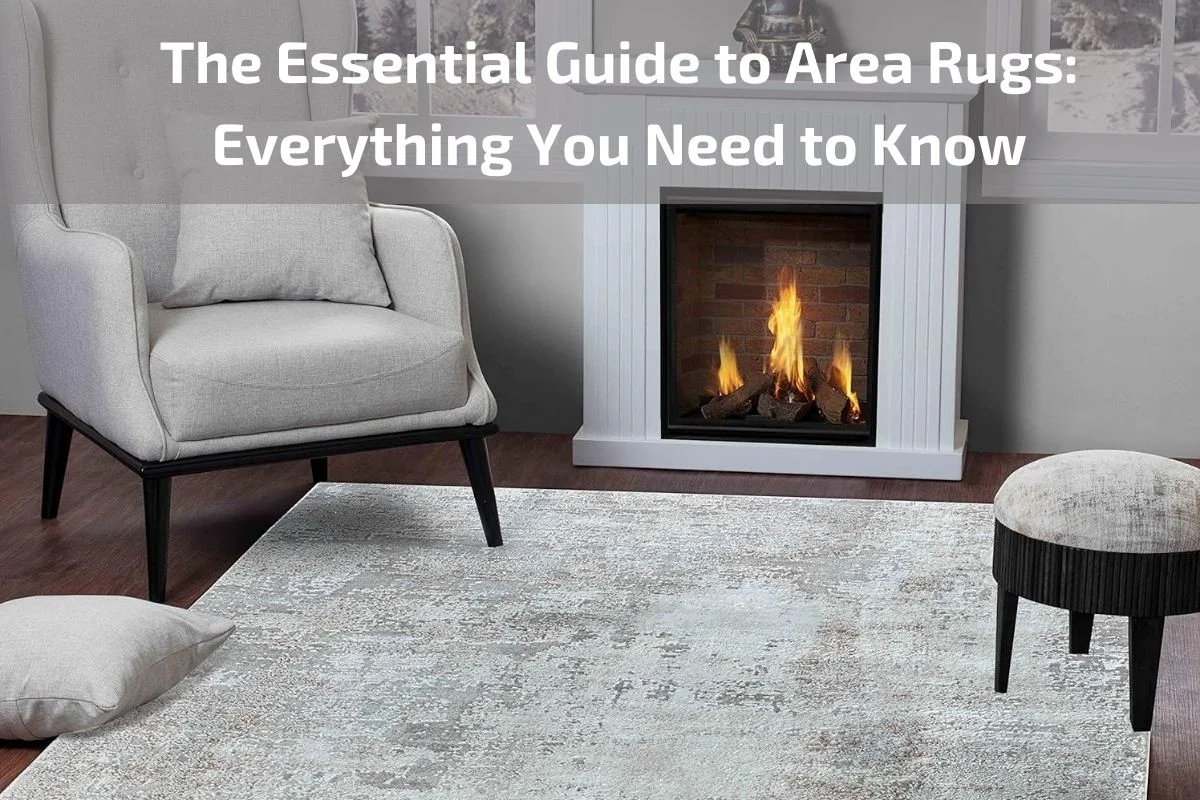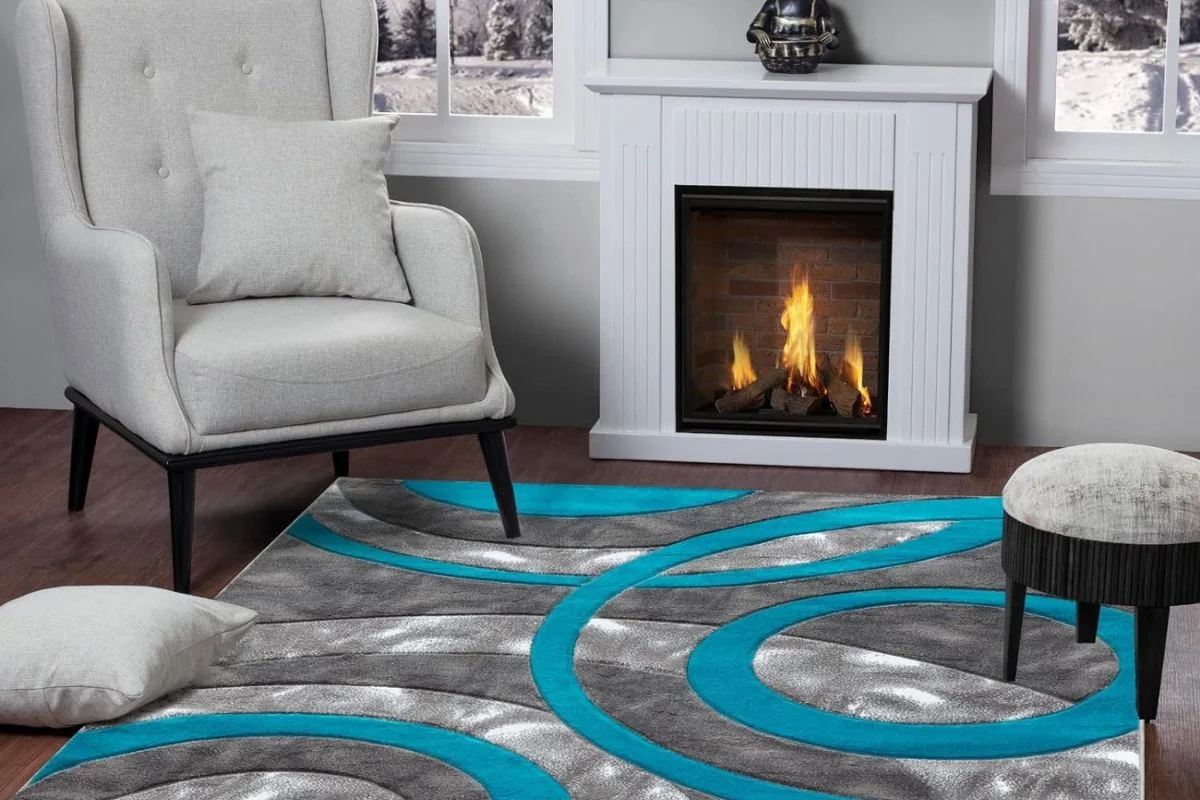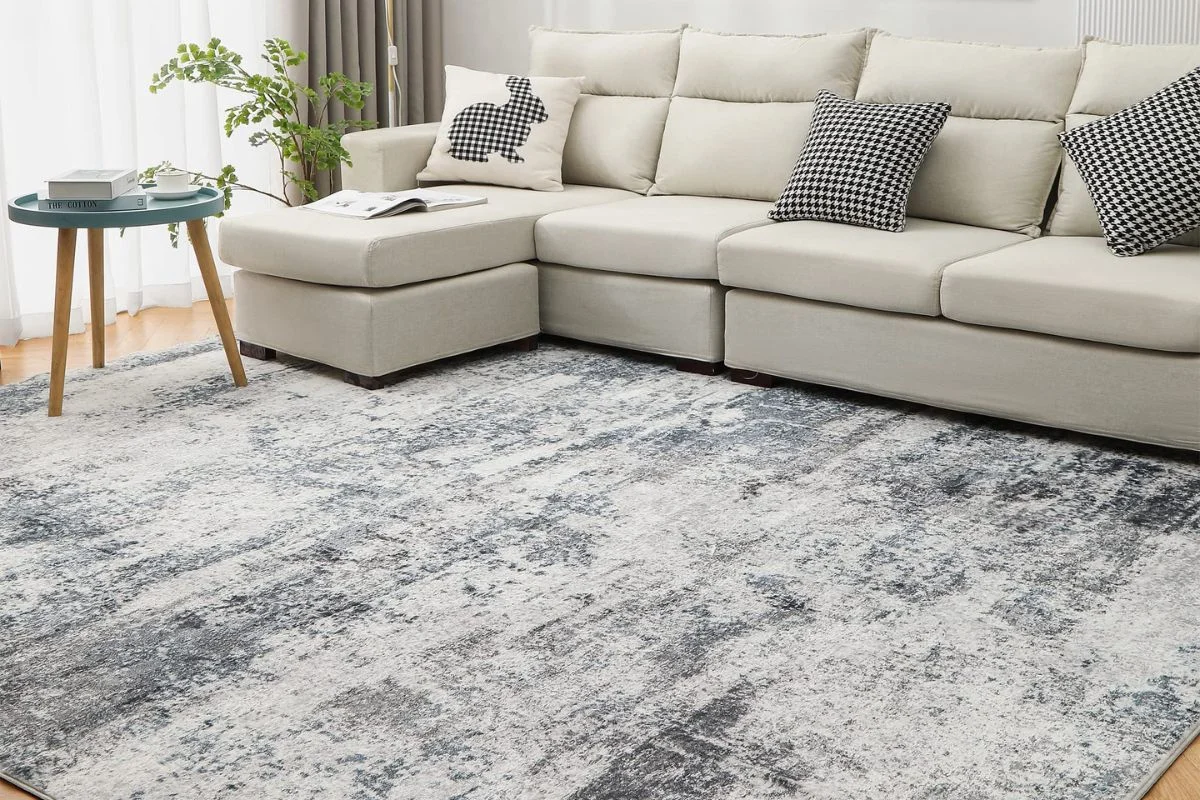
Area rugs are more than just floor coverings; they are versatile design elements that can transform a space, define areas, and add warmth and personality to any room. Whether you’re looking to anchor furniture, create visual interest, or simply enhance the comfort of your home, area rugs play a crucial role in interior design.
In this comprehensive guide, we’ll delve into everything you need to know about area rugs, from choosing the perfect rug for your space to understanding different materials, styles, and patterns. We’ll explore practical tips for cleaning and maintaining your rugs, as well as how to incorporate them into various rooms and design schemes.
Whether you’re a seasoned decorator or a novice homeowner, this guide will provide you with the knowledge and inspiration to make informed decisions when it comes to selecting, styling, and caring for your area rugs. So, let’s embark on a journey into the world of area rugs and discover the endless possibilities they offer for transforming your home into a stylish and inviting sanctuary.
Brief Overview of the Importance of Area Rugs in Interior Design:
Area rugs play a pivotal role in interior design, serving as versatile accessories that tie together the elements of a room while adding warmth, texture, and visual interest. Here’s why area rugs are indispensable in interior design:
Anchor and Define Spaces: Area rugs act as visual anchors that define specific areas within a room, such as seating areas in living rooms or dining spaces in open-concept layouts. By delineating zones, area rugs help create a sense of organisation and purpose in a space, making it more functional and aesthetically pleasing.
Enhance Aesthetics: Area rugs serve as design focal points that can elevate the overall aesthetic of a room. With a wide range of colours, patterns, and textures available, area rugs allow homeowners to express their personal style and enhance the ambiance of their living spaces. Whether adding a pop of colour to a neutral room or complementing existing decor with a coordinating pattern, area rugs contribute to the visual appeal of any interior.
Provide Comfort and Warmth: Beyond their decorative function, area rugs also offer practical benefits by providing a layer of comfort and warmth underfoot. In rooms with hard flooring surfaces like hardwood or tile, area rugs soften the space, making it more inviting and comfortable for occupants to walk, sit, or lounge.
Absorb Sound and Reduce Noise: Area rugs help absorb sound and reduce noise levels within a room by dampening echoes and muffling footsteps. This makes them particularly valuable in high-traffic areas or rooms with hard surfaces, where sound reverberation can be more pronounced.
Protect Flooring: Area rugs serve as a protective barrier for flooring surfaces, helping to shield them from scratches, scuffs, and wear caused by foot traffic, furniture movement, and everyday activities. By acting as a buffer between furniture and floors, area rugs help extend the lifespan of flooring materials and minimise maintenance requirements.
Flexible Design Solutions: One of the greatest advantages of area rugs is their versatility in design and placement. Whether used as statement pieces in large rooms or as accents in smaller spaces, area rugs offer flexible design solutions that can be easily adapted to suit different styles, layouts, and preferences.

The Benefits of Area Rugs
Area rugs offer a myriad of benefits that enhance both the aesthetics and functionality of interior spaces. Here are some key advantages of incorporating area rugs into your home decor:
Enhancing Aesthetics: Area rugs serve as decorative focal points that can instantly elevate the visual appeal of a room. With their wide range of colors, patterns, and textures, area rugs add depth, dimension, and personality to interior spaces, enhancing the overall ambiance and style.
Adding Warmth and Comfort: In rooms with hard flooring surfaces like hardwood or tile, area rugs provide a layer of warmth and comfort underfoot. By softening the space and creating a cozy atmosphere, area rugs make living areas more inviting and conducive to relaxation and leisure activities.
Defining Spaces and Layouts: One of the primary functions of area rugs is to define specific areas within a room and establish visual boundaries. Whether used to delineate seating areas in living rooms or dining spaces in open-concept layouts, area rugs help organize the space and create a sense of cohesion and purpose.
Absorbing Sound and Reducing Noise: Area rugs help absorb sound and reduce noise levels within a room by minimizing echoes and muffling footsteps. This makes them particularly beneficial in high-traffic areas or rooms with hard surfaces, where sound reverberation can be more pronounced.
Protecting Flooring: Area rugs act as protective barriers for flooring surfaces, shielding them from scratches, scuffs, and wear caused by foot traffic, furniture movement, and everyday activities. By preventing direct contact between furniture and floors, area rugs help preserve the integrity and appearance of flooring materials.
Enhancing Safety: Area rugs can improve safety by providing traction and stability on slippery surfaces, reducing the risk of slips, trips, and falls, especially in households with young children or elderly individuals. Additionally, rug pads can be used to secure area rugs in place and prevent them from shifting or sliding.
Flexible Design Options: With their versatile designs and sizes, area rugs offer endless design possibilities that can be customized to suit individual preferences and décor styles. Whether used as statement pieces in large rooms or as accent pieces in smaller spaces, area rugs provide flexible design solutions that can be easily adapted to changing tastes and needs.
Types of Area Rugs
Area rugs come in a variety of types, each distinguished by its materials, construction, and design characteristics. Understanding the different types of area rugs can help homeowners choose the best option for their specific needs and preferences. Here are some common types of area rugs:
Natural Fiber Rugs: Made from renewable plant materials such as wool, jute, sisal, seagrass, and bamboo, natural fiber rugs are prized for their durability, eco-friendliness, and earthy texture. Wool rugs, in particular, are known for their softness, resilience, and natural stain resistance, making them popular choices for high-traffic areas and family-friendly spaces.
Synthetic Rugs: Synthetic rugs are crafted from man-made fibers such as nylon, polyester, polypropylene (olefin), and acrylic. These rugs are valued for their affordability, stain resistance, and wide range of colors and patterns. Synthetic rugs are ideal for areas prone to spills and stains, such as dining rooms, kitchens, and children’s playrooms.
Handmade Rugs: Handmade rugs are crafted by skilled artisans using traditional weaving techniques passed down through generations. These rugs can be made from natural or synthetic fibers and often feature intricate patterns, elaborate designs, and meticulous craftsmanship. Handmade rugs are prized for their authenticity, uniqueness, and investment value.
Machine-made Rugs: Machine-made rugs are mass-produced using automated weaving machines and synthetic fibers. While they may lack the artisanal quality and individuality of handmade rugs, machine-made rugs are more affordable and readily available in a wide range of styles, colors, and sizes. They are suitable for budget-conscious homeowners and those seeking trendy designs.
Specialty Rugs: Specialty rugs encompass a wide range of styles and categories, including shag rugs, Persian rugs, Oriental rugs, kilim rugs, and dhurrie rugs. Each type of specialty rug has its own distinctive characteristics, cultural influences, and design motifs, making them highly sought after by collectors and enthusiasts.
Flatweave Rugs: Flatweave rugs are woven on a loom without a pile, resulting in a flat, lightweight construction. These rugs are known for their durability, versatility, and reversible design, making them ideal for high-traffic areas and outdoor spaces. Flatweave rugs come in a variety of materials, patterns, and colors to suit different decor preferences.
Tufted Rugs: Tufted rugs are created by punching yarn through a backing material to form loops or pile. These rugs can be hand-tufted or machine-tufted and are available in a range of materials and styles. Tufted rugs are valued for their plush texture, softness, and affordability, making them popular choices for bedrooms, living rooms, and cozy seating areas.
Choosing the Right Area Rug
Selecting the perfect area rug for your space involves considering a variety of factors, including size, shape, material, style, and budget. Here are some key considerations to help you choose the right area rug:
Size and Shape: Determine the appropriate size and shape of the area rug based on the dimensions of the room and the layout of furniture. In living rooms, for example, a large area rug should be large enough to accommodate all furniture legs or at least the front legs of sofas and chairs. Rectangular rugs are common choices for most rooms, but consider round or square rugs for unique spaces or to create visual interest.
Material: Consider the material of the area rug based on the desired look, feel, and durability. Wool rugs are soft, resilient, and naturally stain-resistant, making them ideal for high-traffic areas and family-friendly spaces. Natural fiber rugs like jute and sisal offer a textured, earthy appeal and are suitable for casual or coastal-inspired interiors. Synthetic fibers like nylon and polyester are durable, easy to clean, and available in a wide range of colors and patterns.
Style and Pattern: Choose a rug style and pattern that complements the existing decor and enhances the overall aesthetic of the room. Consider the color scheme, furniture style, and architectural features when selecting a rug pattern. Bold patterns and vibrant colors can make a statement in neutral rooms, while subtle patterns and muted tones can create a sense of harmony in busy spaces.
Pile Height and Texture: Pay attention to the pile height and texture of the rug, as these factors can influence the look and feel of the room. Low-pile rugs have a flatter surface and are easier to clean, making them suitable for high-traffic areas and homes with pets. High-pile rugs offer a plush, luxurious feel underfoot and are perfect for bedrooms and cozy seating areas.
Maintenance and Care: Consider the maintenance and care requirements of the area rug, including cleaning and upkeep. Choose a rug that is easy to clean and maintain based on your lifestyle and household needs. For example, synthetic rugs are generally more stain-resistant and easier to clean than natural fiber rugs, which may require special care and maintenance.

Care and Maintenance of Area Rugs:
Proper care and maintenance are essential to keep your area rugs looking their best and prolonging their lifespan. Here are some tips for effectively caring for and maintaining your area rugs:
Regular Vacuuming: Vacuum your area rugs regularly to remove dust, dirt, and debris that can accumulate over time. Use a vacuum cleaner with adjustable suction settings and a brush attachment to gently clean the rug’s surface without causing damage to the fibers.
Rotate Periodically: Rotate your area rugs periodically to ensure even wear and fading. Rotating the rug every six months to a year helps distribute foot traffic and sunlight exposure evenly across the rug’s surface, preventing uneven wear and color fading.
Spot Clean Spills Promptly: Attend to spills and stains immediately to prevent them from setting into the rug fibers. Blot the affected area with a clean, absorbent cloth or paper towel to absorb excess liquid, then gently blot with a mild detergent solution and water. Avoid rubbing or scrubbing the stain, as this can cause it to spread and penetrate deeper into the fibers.
Professional Cleaning: Schedule professional cleaning for your area rugs at least once a year, or as needed, to remove embedded dirt, stains, and odors. Professional rug cleaners have the expertise and equipment to clean and restore area rugs without causing damage to the fibers or colors.
Protect from Sunlight: Protect your area rugs from prolonged exposure to direct sunlight, as UV rays can cause fading and discoloration over time. Use window treatments or UV-blocking films to filter sunlight and minimize its impact on the rug’s colors and fibers.
Use Rug Pads: Place rug pads underneath your area rugs to provide cushioning, prevent slipping, and protect the underlying flooring surface. Rug pads also help extend the life of your rug by reducing friction and wear caused by foot traffic and furniture movement.
Rotate Furniture: Avoid placing heavy furniture directly on your area rugs for extended periods, as this can cause indentations and crushing of the rug fibers. Use furniture pads or coasters to distribute weight evenly and minimize pressure on the rug.
Vacuum Underneath: Occasionally, lift and vacuum underneath your area rugs to remove dust and debris that may accumulate on the flooring surface. This helps prevent dirt and grit from settling underneath the rug and scratching the flooring material.
Address Pet Stains and Odors: If you have pets, promptly clean up any accidents and treat pet stains and odors with specialized pet stain removers and deodorizers. Follow the manufacturer’s instructions and test the products on a small, inconspicuous area of the rug before applying them to the stained area.
Conclusion
In conclusion, area rugs are indispensable elements of interior design that offer both aesthetic and practical benefits to homeowners. From enhancing the visual appeal of a room to providing warmth, comfort, and functionality, area rugs play a vital role in creating inviting and stylish living spaces.
